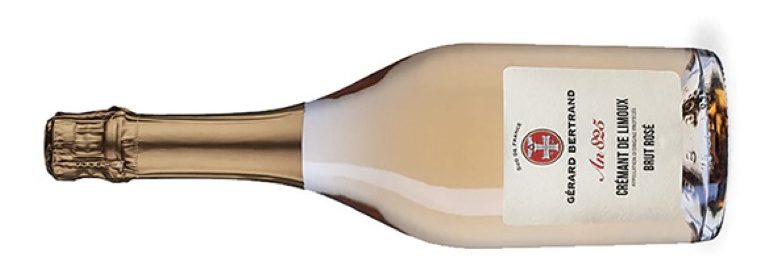
Sunny and welcoming, the southwestern region of Languedoc in France is home to more than 90,000 acres of vines and some 22,000 winemakers and négociants. Here, white, red, rosé and sparkling wines enjoy 300 days of sunshine and an array of influences from both the Mediterranean and Atlantic climates. The winegrowers of Languedoc are experiencing a renaissance, shifting production to wines of truly high quality that showcase their many natural advantages and a reputation for taking chances. The local community is also fully invested in the health of their vines: Languedoc boasts the most organic vineyard acreage in all of France.

As far back as the first century B.C., Languedoc was known to the Romans for its inventive vineyard practices and olive groves. More than 2,000 years later, Languedoc still has a very open-minded wine culture. The landscape can feel quite wild, scented with sea salt and garrigue, the mix of lavender, juniper, thyme, rosemary and scrub that intensifies as you move into the hills. Languedoc is brimming with potential and very welcoming to outsiders drawn to the affordable vineyard prices and opportunity to make wine on their own terms. “You feel like pioneers; you have the freedom to make the style of wine you want to make, and that’s why we’re here,” explains Elizabeth Bowen, a British expat and winegrower in the tiny village of Fraissé-des-Corbières, between Narbonne and Perpignan.

Languedoc has 20 appellations, or AOPs, that variously cover quality designations for still table wines, sweet wines and sparkling wines. Nine of the 20 AOPs are less than 20 years old, fueling a spirit of restless innovation. AOP Languedoc is the base appellation for still-wine production, with much of the vineyard area heavily influenced by Mediterranean coastal plains that stretch west from the city of Montpellier toward Spain. The Mediterranean brings warm, sunny summers and mild, wet winters, while the dramatic limestone cliffs combine with sandstone and clay soils to support 26 official white and red grape varieties.

Red wines account for 60% of all Languedoc wines, with particularly notable blends of Grenache, Syrah, Mourvèdre and Carignan. The freshness in these Mediterranean reds makes them extremely appealing. “The quest is one of balance,” local wine expert Claire Henry explains. “Languedoc winegrowers are finding ways to finesse their wines to keep them fresh and manage ripeness without too much oak.” Like many in the region, Mas du Novi in the Languedoc Grès de Montpellier area looks for a fusion of generosity and freshness in its reds. Set in the hills above Montpellier with beautiful views of the Mediterranean, the all-organic Mas du Novi estate dates back to an 11th-century abbey and is committed to preserving 150 acres of wild garrigue woods to naturally shelter its vines from extreme winds and heat. In the cellar, gentle extraction and a mix of ageing in tanks, amphorae and barrels keep rich, full-bodied flavors in balance.

With such a large area under vine, Languedoc is a sleeping giant. “Languedoc wines can compete with virtually all categories, from sparkling to sweet and everything in between, at a fraction of the price of their competitors,” shares sommelier Erik Segelbaum. “The whites show intensity and balance; the reds show freshness and terroir. And, best of all, the value proposition across all categories is unmatched.” Beyond the reds, the charming AOP Picpoul de Pinet is dedicated entirely to white wines made from Piquepoul, an heirloom variety with crisp grapefruit and citrus notes. The vineyards of Picpoul overlook the Étang de Thau, an immense lagoon renowned for oysters that pair perfectly with the wines. For rosé lovers, Languedoc offers a delicious range, from Grenache to Cinsault, Mourvèdre, Syrah and Carignan that give Provence a run for its money, especially from the exceptional AOP Cabrières, the original purveyor of vin rosé to the court of Louis XIV in Versailles.

FONT-MARS 2021,
AOP PICPOUL DE PINET
($14.99)
100% PIQUEPOUL. SHOWS WHITE PEACH, MELON AND A TOUCH OF SALTY-MINERAL FLAVOR. EXTRA CRISPY WITH BEAUTIFUL ACIDITY.

GERARD BERTRAND BRUT ROSÉ HERITAGE
AN 825 2020, AOP CRÉMANT DE LIMOUX
($22.99)
A SPARKLING ROSÉ BLEND OF CHARDONNAY, CHENIN BLANC AND PINOT NOIR. BEAUTIFUL SALMON-PINK WITH LIVELY NOTES OF STRAWBERRY, RASPBERRY AND LIGHT TOAST.

DOMAINE D’AUPILHAC, LOU MASET 2020, AOP LANGUEDOC
($24)
40% GRENACHE, 40% CINSAULT, 10% CARIGNAN, 10% SYRAH AND ALICANTE BOUCHET. A FRESH AND FRUITY RED WITH SPICY NOTES, GREAT LENGTH AND SILKY TANNINS.
As you move into western Languedoc and the foothills of the Pyrenees, the rocky landscape, the climate and even the language change perceptibly. More influenced by the Atlantic than the Mediterranean, AOP Crémant de Limoux, the sparkling wines of Languedoc, thrive in higher elevation vineyards. As early as 1531, the monks at the Abbey of Saint-Hilaire near the town of Limoux are credited with making the first sparkling wine, some 150 years before Champagne. Crémant de Limoux offers delicious bubblies with modern styles based on Chardonnay, Chenin Blanc, Pinot Noir and the local Mauzac (or Blanquette). This traditional variety also stars in Blanquette de Limoux and Méthode Ancestrale wines, a nod to Languedoc’s sparkling history.
According to local legend, the Holy Grail was hidden for all times on Montségur, a castle of haunting beauty in the peaks of Languedoc. Visitors to the region can lounge on sandy beaches or hike in the footsteps of the Knights Templar and long-forgotten sects like the Cathars, who once controlled the ramparts of the ancient citadel of eastern Carcassonne. Like the wines, Languedoc is an off-the-beaten path destination but, truly, a hidden gem ripe for discovery. *
Helen Gregory is the founder and president of Gregory + Vine. She has worked in strategic brand management and communications for beverage industry leaders such as Moët Hennessy USA, Rémy Cointreau and STOLI, and has led award-winning hospitality, beverage and lifestyle campaigns for prestige clients from the European Union to Argentina, Australia, Chile, Israel, South Africa and across the United States.

